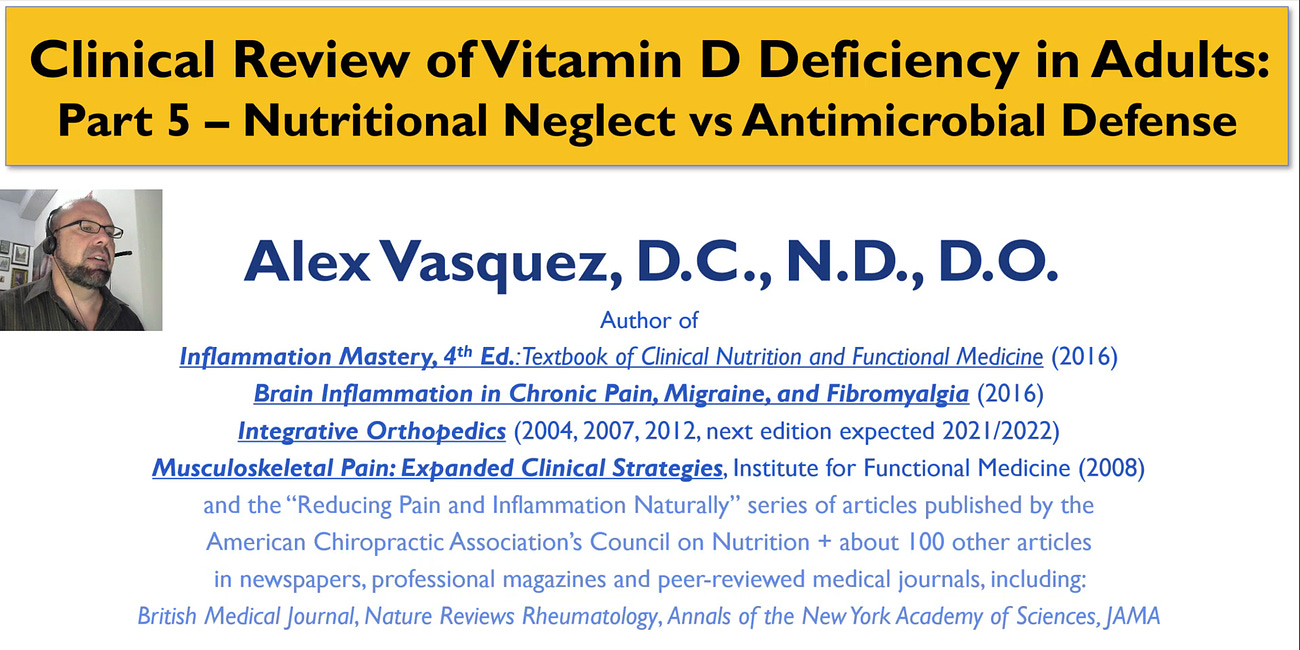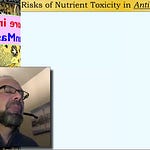In order to confuse a very important topic, THE LANCET* starts an Editorial on vitamin D and Covid (as in the global plandemic that was and is the greatest medical crisis of our lifetimes) by quoting a beer commercial from 1936; you would NEVER see such journalistic misbehavior in discussions about antibiotics or vaccines but you can see this absurdity with high freuquency in medical journal articles discussing nutrition—their goal is to make the topic appear absurd and confusing. * Lancet Diabetes Endocrinol 2021 Feb
EIGHTEEN (18) STRATEGIES used by the major medical journals (eg, Lancet, JAMA, NEJM, BMJ) and the Drug Cartel to SNAFU the conversation on Nutrition include:
Publication of stale, outdated, incomplete information with the pretense that it reflects the current state of the art.
Contradicting their own publications when doing so is convenient for ongoing medical hegemony and drug sales.
Violating any and all reasonable standards with regard to the selection of placebos—when they want nutrition to look ineffective, they use a very competitive active placebo; when they want nutrition to look effective (for example when trying to promote sales of a patented prescription-only form of fish oil) then they use a dangerous/harmful placebo to make the prescription product look safe and effective.
Refusing to publish counterpoints—in my experience with publishing articles/letters for the past 30+ years, NEJM is the only journal that has consistently (eg, 3-4x) refused to publish my critiques, even when I cite authoritative data, especially emphasizing data from their own publication.
Using 1) wrong laboratory tests, 2) wrong reference ranges, 3) inadequate supplement dosing [or using 4) toxic/bolus dosing], 5) inadequate durations, 6) delayed implementation of intervention, against 7) false placebos 8) inappropriate outcome markers in order to fake the appearance of using objective laboratory assessments and “placebo-controlled studies” to pseudo-establish that deficiencies don’t exist and that supplementation does not provide benefit.
Using awkward formatting so that the articles are more difficult to read and interpret. Allen in “Micronutrients - Assessment, Requirements, Deficiencies, and Interventions. N Engl J Med. 2025 Mar” demonstrates the most defective use of tables and abbreviations that I have ever seen in my 30+ years of looking at research—for such a simple article, the data should have been presented clearly.
Pro-drug and anti-nutrition articles are generally made available by the journals for free, while drug-negative and pro-nutrition articles are generally restricted behind a paywall (even when the research was funded by taxpayer dollars and should therefore be in the public domain) to reduce access. This obviously results in an imbalance of data availability, with pro-drug anti-nutrition articles gaining more access to the public and the corporate news media, while pro-nutrition articles are hard to find for the public, doctors, politicians, and the media.
Using tables to “summarize” information without having presented and substantiated the information in the text.
Consistently promising their readership of doctors to cover the entire topic of nutrition within a few pages and consistently failing to deliver—this cannot avoid disappointing their readership and promoting aversion to the topic of nutrition. Allen in “Micronutrients - Assessment, Requirements, Deficiencies, and Interventions. N Engl J Med. 2025 Mar” promises to review 20 micronutrients but only reviews 12 of them and provides 0 (zero) clear instruction on how to implement supplementation on any of the reviewed nutrients. Image the reverse: a review article on antibiotics that fails to mention dosing and clinical applications—such an article would be seen as worthless and would never be published.
Giving inappropriate credit to vaccines when implementing nutritional interventions at the same time. British Medical Journal 2019 published 2 articles that served as HPV vaccine advertisements while the authors and editors intentionally overlooked a nationwide vitamin D supplementation program, with vitamin D already having a proven role in combating viral infections in general and HPV in particular.
Using awkward terminology and unknown abbreviations instead of clearly communicating the data in a manner that is clinically useful.
Using bizarre contortions of language instead of simply speaking clearly; using distractions to waste the time of the reader—but only when discussing nutrition.
Instead of clearly stating that low-carbohydrate diets caused a 50% reduction in systemic inflammation as measured by the biomarker CRP (JAMA 2004 Nov), the authors/editors completely clusterfucked the communication by stating "Conclusions: Changes in dietary composition within prevailing norms can affect physiological adaptations that defend body weight."
In order to confuse a very important topic, THE LANCET* starts an Editorial on vitamin D and Covid by quoting a beer commercial from 1936; you would NEVER see such misbehavior in discussions about antibiotics or vaccines. * Lancet Diabetes Endocrinol 2021 Feb
VITAMIN D (Goldmine5) in Antimicrobial Antiviral Defense against Clinically Important Viral Infections
·See video embedded above for “VITAMIN D (Goldmine5) in Antimicrobial and Antiviral Defense against Clinically Important Viral Infections”
Failing to include relevant clinical trial data and then stating “clinical evidence does not exist.” Failure to review relevant recent research is a form of scientific misbehavior.
Failing to include details, nuance, and context that would make the information useful for doctors. This article does NOT represent the clinical practice of nutrition as performed by nutrition-knowledgeable doctors.
Pretending to provide complete reviews but failing to do so; the article “Micronutrients — Assessment, Requirements, Deficiencies, and Interventions” in N Engl J Med 2025Mar completely fails to detail interventions for most of the nutrients that are discussed. The intervention recommendations are outdated and inadequate and incomplete.
Whenever they find results that “nutrition does not work” then they are very sure of the results, significance and break-through clinical importance; the article gets double exposure with an accompanying Editorial and is generally made available for free. If they later perform an additional analysis using the same data and the same population and the same intervention and find that “nutritional supplementation reduces cancer risk by 25%” then they frame it as a “suggestion” and “a trend in a positive direction.”
Drug companies in America use direct-to-consumer advertising (DTCA), which is illegal in most other countries, with the pretense of “informing” and “educating the public about advances in medicine and science” but the true aim of this strategy is not simply to advertise their products but rather to influence television/newspaper/magazine editors—when media outlets receive the majority of their funding from drug company advertisements, those media outlets are highly unlikely to pursue and publish news that offends the drug industry; on the contrary, these news outlets publish stories glorifying the drug-medical industry, thereby grooming the audience to be evermore receptive to using medical solutions for all their nonmedical problems. Likewise, drug companies fund multimillion-dollar advertisements in medical journals and thus likewise skew editorial decisions toward publishing pro-drug and anti-nutrition articles masked as “research.”
“Journals with the most pharmaceutical advertisements (pharmads) published significantly fewer major articles about dietary supplements (DS) per issue than journals with the fewest pharmads (P < 0.01). Journals with the most pharmads published no clinical trials or cohort studies about DS. The percentage of major articles concluding that DS were unsafe was 4% in journals with fewest and 67% among those with the most pharmads (P = 0.02). The percentage of articles concluding that DS were ineffective was 50% higher among journals with more than among those with fewer pharmads (P = 0.4). Conclusion: These data are consistent with the hypothesis that increased pharmaceutical advertising is associated with publishing fewer articles about DS and publishing more articles with conclusions that DS are unsafe.” Kemper KJ, Hood KL. Does pharmaceutical advertising affect journal publication about dietary supplements? BMC Complement Altern Med 2008 Apr 9;8:11. doi: 10.1186/1472-6882-8-11 PMC2322947.
Bullshit about “FDA regulation” and “quality standardization” is a recurrent motif in pro-drug and anti-nutrition propaganda; meanwhile, FDA-endorsed drugs have abysmal quality control and are a leading cause of death in the United States even though these drugs are government-endorsed and mostly administered by American-educated American-trained American-licensed physicians. Schmeling M, Manniche V, Hansen PR. Batch-dependent safety of the BNT162b2 mRNA COVID-19 vaccine. Eur J Clin Invest. 2023 Aug;53(8):e13998 https://doi.org/10.1111/eci.13998
BONUS: Using coordinated attacks against experts and anyone else who interferes with absolute medical hegemony. When Eric Topol MD published the obvious data showing that Vioxx was lethal and that the FDA and Merck colluded to mislead doctors and the public, he was fired from his position at Cleveland Clinic. Dr Alex Vasquez published Antiviral Nutrition in 2014 and the book was consistently ranked as a best-seller, but Amazon censored the book at the start of the 2020 plandemic to erase any options from the treatment repertoire for covid to pave the way for drug/vaccine-dependency.
BONUS: Consistently failing to educate doctors about nutrition in medical school and hospital-training/residency programs keeps doctors ignorant and skeptical about the entire topic of nutrition, which is otherwise as simple as ensuring that the body has the molecules and means to support optimal function.
SEE VIDEO REVIEW ABOVE: Articles like this on nutrition in the New England Journal of Medicine use a range of strategies to confuse and confabulate the entire topic of clinical nutrition, so that doctors/policymakers will be confused and repulsed by the topic, thereby allowing the drug-medical cartel to reign supreme with the only alternatives and authority being that of drug-pushing and drug-dependency.
See: my previous post from yesterday that contains the full text of the article.
Citation: Allen LH. Micronutrients - Assessment, Requirements, Deficiencies, and Interventions. N Engl J Med. 2025 Mar 6;392(10):1006-1016. doi: 10.1056/NEJMra2314150
NEJM is the vanguard of “medical libertarianism” pushing the paradigm of “we will say and do anything we want because we say and do anything we want” to promote medical dominance and drug/surgery dependence.
DOWNLOAD [reprocessed SD] VIDEO FILE from this folder
I have been trying to upload this video for the past 7+ hours using 2 different wifi networks, 2 different substack pages, and 2 different computers but for some reason (hopefully just bad weather?, defective file?* [reprocessed from high resolution {HD} to standard resolution {SD}] and not censorship?) the video is not being accepted even though it reaches 100% upload on several occasions. I have tried at least 10 times, using the same computer and same software and same video format that I have been using for years and years… *My updated best guess is that (for whatever reason) the original video file somehow had a defect in it; as such, I re-processed the video…
















Share this post